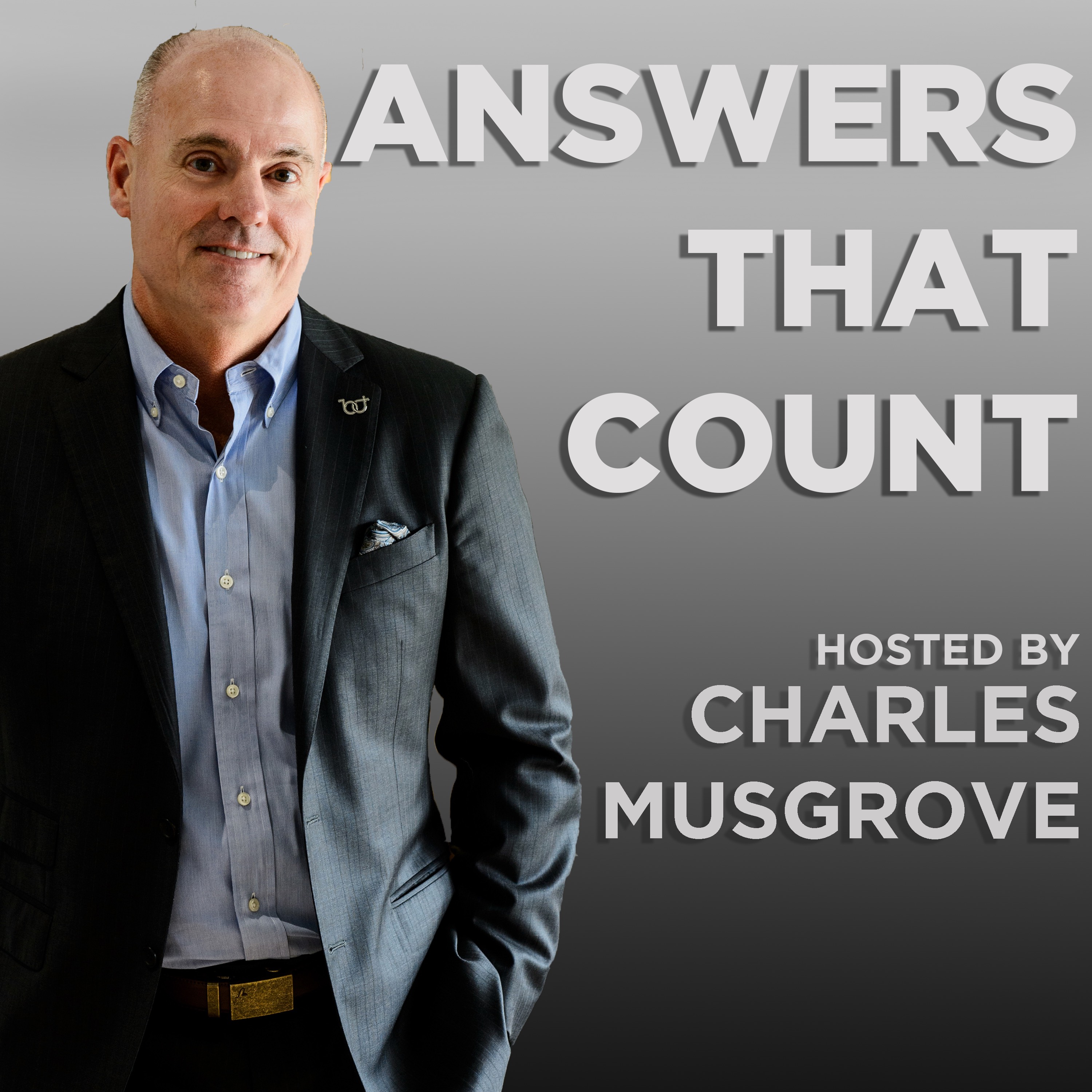
4.8K
Downloads
98
Episodes
Welcome to the gritty inside truth to running your Main Street Business! Learn what it takes to start, run, scale, protect, and yes make a profit in your business from one of the leading experts in business today. Charles Musgrove has guided countless Main Street Entrepreneurs through the pitfalls of running a profitable business. Now he shares this business insight through Answers That Count. Through his unique life experiences and entertaining interviews, you will discover the answers to the questions you have been asking!
Episodes

Monday Feb 17, 2020
Monday Feb 17, 2020
In this episode Charles Musgrove and guest Taylor Hodges with Southern Capital discuss important information about disability insurance and life insurance. These policy types provide the beneficiary and owner a method to cover for those events that cannot be paid from available cash.
From Smart About Money
Why You Need Disability Insurance
Disability insurance provides a source of income to people who are unable to work due to an accident or illness. Remember that your earning power is one of your greatest financial assets.
Without disability insurance protection, workers and their dependents are “living on the edge,” at risk of losing their homes and investments. If you need disability insurance, take a look at the details:
- The average disability claim lasts almost 13 months and mortgage foreclosures due to disability occur 16 times as often as they do for death. Yet, more than 40 percent of full-time workers do not have coverage in the event of a short- or long-term disability to protect against a loss of income.
- Research indicates that one-third of employed Americans will become disabled for at least 90 days at some point in their career. Yet, lack of disability insurance is a common financial error.
- Adequate disability policies generally need to be purchased individually from an insurance agent. While some employers provide disability coverage, it is generally short-term and may replace only a small portion of a worker’s salary. In addition, if the employer pays for coverage, benefits are taxable.
- Disability insurance is especially critical for self-employed workers and those who lack the ability to “bank” employer-paid sick leave. Financial experts generally advise purchasing a policy to replace about two-thirds (60 percent to 70 percent) of a worker’s monthly income. Insurance companies usually don’t provide coverage above this or it would discourage people from returning to work.
- Two key features of disability insurance, that greatly influence its cost, are the definition of disability and the elimination period. “Own occupation” policies are more expensive because they kick in when you are unable to perform duties of the job for which you are trained — which means, even if you’re still able to do other types of jobs, but you are not able to do your chosen profession, then you can collect on the disability insurance. On the other hand, “any occupation” coverage defines disability as the inability to do any type of work. Many insurers also offer “split definition” policies that use an “own occupation” definition for several years, followed by an “any occupation” definition later on.
- The elimination (waiting) period is the number of days after a disability begins before benefits are paid. The longer the elimination period (for example, 90 days versus 30 days), the lower the premium for a specified amount (for example, $1,500 a month) of disability insurance.
- Read the fine print. Look for a disability insurance policy that is non-cancelable or guaranteed renewable and pays residual benefits to make up for lost income when a worker is unable to work at full capacity. For example, if an insured person goes back to work three days a week at 60 percent of full pay, the benefit would be prorated to reflect the actual amount of income lost.
- Review the recurrent disability clause that describes what happens if an insured person becomes disabled again from a preexisting disability. For example, if someone becomes disabled again from the same cause, say, within six months of returning to work, they may not have to wait for another elimination period.
- Consider purchasing a cost-of-living rider to protect the purchasing power of monthly benefits. Also check provisions related to disability benefits provided by an employer disability policy or Social Security. Sometimes income from these sources will be considered part of the policy benefit.
- Consider purchasing a policy for the remainder of your working life (until age 65, for example).
- Work with an independent insurance agent to shop around among competing carriers.
- If you are unable to qualify for disability insurance at an affordable price consider investing the amount that you would have paid monthly for premiums, to build up your emergency reserves.
- In a divorce decree, require an ex-spouse to purchase and maintain disability insurance if you are dependent on his or her income for support payments.
From Article by Adkins Insurance
You are 7 times more likely to become disabled before age 65 than to die, according to statistics and marketing research organizations. This startling statistic brings to light the importance of owning the correct type of insurance, even if you are young and healthy. Life insurance and disability insurance are very different, so how do you prioritize?
Life Insurance
Simply put, life insurance provides financial protection for your loved ones should something happen to you. You may also gain access to living benefits, such as cash withdrawals from Permanent type plans, or Living benefits that may be available to you in a Term plan should you become ill from a terminal illness.
You’ve probably heard of the different types of life insurance policies, for example term or permanent insurance. Term insurance policies provide protection for a set period of time. If you’re young and healthy, you may be tempted by the short-term security and lower prices of a term contract, but permanent insurance policies can often be the better deal in the long run.
Disability Insurance
To many, disability insurance is viewed as an unnecessary or unaffordable expense, and Social Security Disability will take care of them. Social Security Disability could take several years to receive any benefits and in most cases is not sufficient to a beneficiaries’ current needs.
Should you become disabled, your private disability insurance policy is designed to replace your after-tax income. Typically polices are written to replace 67% of your pre-taxed income. Disability policies generally provide monthly payments to you to cover your needs instead of
covering specific expenses.
Types of disability plans are some short-term and long-term. Generally, short term policies are written for benefits from 2-5 years and Long-Term disability policies are to age 65. Your policy will describe the definition of disability and most polices will require you to be disabled for a set amount of time before you begin receiving your benefits, so be sure to take a good look at the specifics of your plan before signing any contracts.

No comments yet. Be the first to say something!